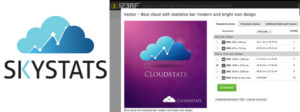11 Nov So What Kind of Logo Can You Get for $5?
 Sacha Greif wondered just that when he heard about the bargain basement job site Fiverr, which connects buyers with sellers willing to provide their services – from business plans to programming to creative services – for only $5. Fiverr has been aggressively promoting their design services, exhorting businesses to “put an end to being ripped off” by paying $100 for a logo. In contrast, the website promises “unique design, fast and affordable.”
Sacha Greif wondered just that when he heard about the bargain basement job site Fiverr, which connects buyers with sellers willing to provide their services – from business plans to programming to creative services – for only $5. Fiverr has been aggressively promoting their design services, exhorting businesses to “put an end to being ripped off” by paying $100 for a logo. In contrast, the website promises “unique design, fast and affordable.”
Grief had reason be intrigued. In 2011, he started an online service, Folyo, which connects businesses to vetted freelance designers. However, unlike Fiverr, Folyo places the budgets for the services provided by their designers at between $1,000 and $10,000, depending on the project. Fiverr’s promise of “a custom design project” for only $5 seemed impossible. To investigate the quality of work he would receive, Greif created a fictitious company, SkyStats, and went to Fiverr to find a designer to create a logo.
As described in his article on Medium and on his blog, Grief noticed that the quality of the designers’ work quickly dropped off as he browsed through their portfolios: “…the quality would suddenly drop after a few pages, quickly going from sleek, glossy renders to amateurish, clumsy clip-art…these designers were appropriating other designers’ work, and passing it off as their own.” A Google reverse image search confirmed his suspicions. (Fiverr designers have a reputation for stealing work; Jeff Fisher of Logomotives has long been documenting Fiverr designer ripoffs on Twitter.) Greif also discovered that the claim of a $5 logo was a bit misleading; requesting “add-ons” such as source files or copyrights to the work added a whopping $20-40 to the fee.
Greif finally settled on three designers who portfolios appeared to carry only original work. The designers reassured him that they would only deliver original concepts. The initial logo designs ranged, in Greif’s opinion, from “bad to surprisingly good”, and he posted the results on his blog. That’s the point at which the story became complicated. Commentators on the blog soon reported that the work of two of the designers – the best work – was ripped off, and posted links to stock agencies carrying the graphics. In fact, the origin of one of the designs, a dimensional cloud graphic, is still up in the air – no pun intended. The work appears both in the Dribbble and Behance portfolios of a Russian designer, and on the stock image site, Dreamstime.



Greif contacted Fiverr to complain that their designers are selling infringed work, and not surprisingly, never heard back. (Fiverr’s terms state that services which engage in copyright or trademark infringement may be removed from the site, and the sellers of such services may be banned.) Greif is remarkably sanguine about cut-rate logos, comparing them to fast-food burgers. But his experience with Fiverr has soured him: “…people trying to deceive you by passing other people’s work as their own, and stock art as original work is another matter altogether. Sadly, this is the kind of incentives you create when you drive price down to such an extent.”
